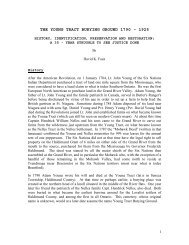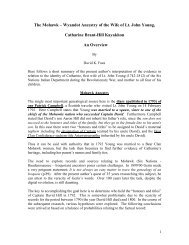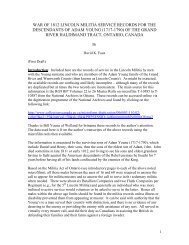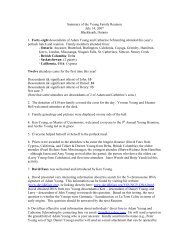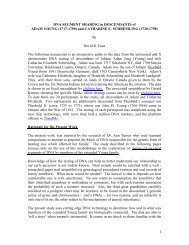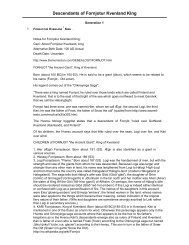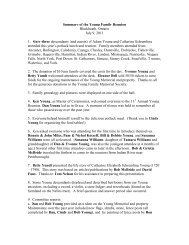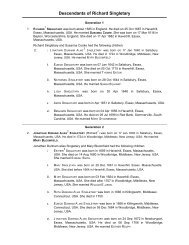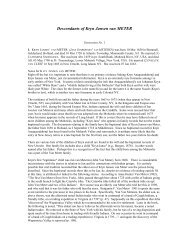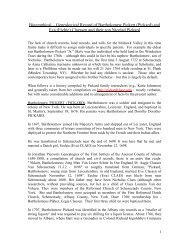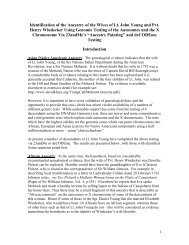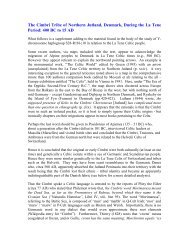Part 2 - Davidkfaux.org
Part 2 - Davidkfaux.org
Part 2 - Davidkfaux.org
You also want an ePaper? Increase the reach of your titles
YUMPU automatically turns print PDFs into web optimized ePapers that Google loves.
and Ireland. The eastern locations, however, were areas where La Tene Celts migratedbeginning circa 400 BC (Livy provides evidence of a migration circa 600 BC). Theyellow line shows the locations of Celtic oppida (early towns). The red area depicts theregions where Celtic inscriptions have been found. If the north and eastern ends werejoined, sweeping around the Volcae, this would be the Celtic extended homeland. Theheartland would be the regions around the headwaters of the Rhone, Rhine and DanubeRivers. The tribes as depicted on this map are those believed to be residing in thoselocations circa 250 BC. Click here for more information on this map.Critique Concerning the Historical and Archaeological EvidenceJohn Collis (2003) has provided a unique brief synopsis of the primary contributions ofeach historian or commentator (largely of the Greco-Roman world) who spoke of theCelts. He has also taken pains to discuss the weaknesses in the evidence sources thatmany authors take as a given. For example it is rare to have an original source to workwith. What is extant is typically a fragmentary distillation of the writings of earlier lostsources and there is no way to ascertain the accuracy of what is found in many historicalsources (e.g., the number of copying errors perpetuated by subsequent authors). Somehistories were written many hundreds of years after the events being described, and arelikely filtered through biases (e.g., stereotypes of a people often poorly understood), andinfluenced by politics (e.g., the need to portray Celts as cruel and disloyal to justify aninvasion). He also details the process, beginning in 1582, which led to the erroneousbeliefs that the peoples of Ireland and Britain were considered as Celts by Classicalauthors, or viewed themselves as Celts in Medieval or earlier times. Hence, by the earlynineteenth century it was universally accepted that the pre-Roman inhabitants of Britainwere Celts (p.73).At this point the focus will shift to individual European countries, picking up the threadof later La Tene developments, and linking these to genetic findings from academic andcommercial sources in relation to haplogroup R-U152.13



